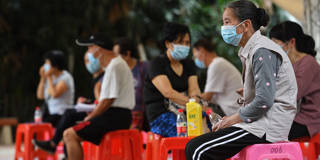It is difficult to achieve political transformation in a country with a median age over 40 and young people aged 15-29 accounting for less than 20% of the population. That is why, even as protests roil cities across China, no one should expect a sustained push for democratization.
MADISON – Protesters have taken to the streets of China’s cities in a rare show of political dissent. While the demonstrations are focused largely on the authorities’ zero-COVID policy, they have sparked speculation that a pro-democracy movement – and even a Taiwan-style political transition – could come next. But this is unlikely, not least because decades of strict family-planning policies have left China with too few young people to join the fight.
A country can be said to be having a “youth boom” when the proportion of people aged 15-29 exceeds 28%. As the most economically dynamic, politically passionate, and physically active members of society, people in this age cohort are particularly likely to challenge norms, participate in protests, and demand reform. So, when a country is experiencing a youth boom, it may also find itself on the path to political change – including, potentially, democratization.
That was the case in Taiwan and South Korea. As the share of young people increased – from 25% in each country in 1966 to a peak of 31% in the early 1980s – so did economic growth and pro-democratic fervor. Both economies became democracies in 1987, when their populations’ median age was 26. A youth boom also contributed to the eruption of the Arab Spring uprisings in 2010, when the median age across the Arab world was just 20.

MADISON – Protesters have taken to the streets of China’s cities in a rare show of political dissent. While the demonstrations are focused largely on the authorities’ zero-COVID policy, they have sparked speculation that a pro-democracy movement – and even a Taiwan-style political transition – could come next. But this is unlikely, not least because decades of strict family-planning policies have left China with too few young people to join the fight.
A country can be said to be having a “youth boom” when the proportion of people aged 15-29 exceeds 28%. As the most economically dynamic, politically passionate, and physically active members of society, people in this age cohort are particularly likely to challenge norms, participate in protests, and demand reform. So, when a country is experiencing a youth boom, it may also find itself on the path to political change – including, potentially, democratization.
That was the case in Taiwan and South Korea. As the share of young people increased – from 25% in each country in 1966 to a peak of 31% in the early 1980s – so did economic growth and pro-democratic fervor. Both economies became democracies in 1987, when their populations’ median age was 26. A youth boom also contributed to the eruption of the Arab Spring uprisings in 2010, when the median age across the Arab world was just 20.